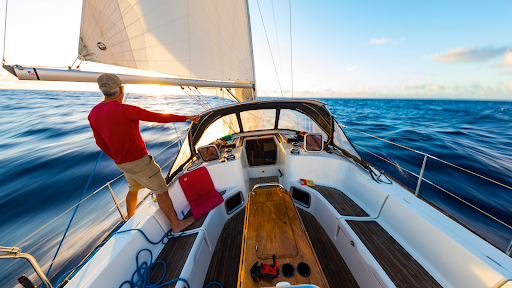Dreaming of Embarking on a Solo Sailing Adventure?
Solo sailing has always been a fascinating and adventurous pursuit. The idea of setting sail alone, navigating through the open waters, and discovering the world on your own terms is incredibly alluring. There is something extremely liberating and liberating about embarking on such a journey. But before you jump ship and set sail on your own, it's important to understand the challenges you may encounter and the necessary safety precautions to take. In this blog post, we will explore the allure of solo sailing, discuss the challenges you may face, and provide some strategies for success.
Safety considerations
Safety should be a top priority for any sailor, whether they're sailing solo or with a crew. When sailing alone, it's crucial to be extra vigilant and prepared to handle any emergency that may arise. Here are some key safety considerations to keep in mind when planning a solo sailing voyage:
1. Preparation and equipment:
Before setting out on your solo sailing adventure, it's important to ensure that you have the necessary skills and knowledge to sail safely and confidently. Take sailing lessons, read books, and familiarize yourself with the mechanics and operations of your vessel. It's also crucial to have a comprehensive set of safety and survival equipment, including life jackets, flares, a VHF radio, and a first-aid kit.
2. Navigation and communication:
When sailing solo, it's essential to have reliable navigation and communication tools on board. Invest in a high-quality GPS device and charts of the area you're sailing in. Learn how to read weather reports and understand the signs of changing weather conditions. It's also important to carry a cell phone or a VHF radio for emergencies.
Strategies for success
Sailing solo requires a unique set of skills and strategies to ensure a safe and successful voyage. Here are some key strategies for solo sailing:
1. Route planning and weather analysis:
Carefully plan your route in advance, taking into account factors such as weather conditions, currents, and shoals. Consult weather reports and forecasts to make informed decisions about the best time to set sail and the most suitable routes. Knowing what to expect can help you prepare for any challenges that may arise.
2. Self-sufficiency:
Solo sailing requires a high degree of self-sufficiency. It is essential to be able to handle all aspects of boat maintenance, repairs, and navigation on your own. Learn basic boat maintenance skills, such as changing oil, repairing minor damages, and conducting regular checks. It's also important to be comfortable sailing in various conditions and have confidence in your sailing abilities.
3. Dealing with emergencies:
No matter how experienced you are, emergencies can happen at sea. It's important to familiarize yourself with the procedures for handling common emergencies, such as man overboard situations, engine failures, and capsize. Always carry a float plan and ensure someone is aware of the details of your voyage.
In conclusion, solo sailing offers an incredible opportunity to explore the world on your own terms. It requires preparation, caution, and self-sufficiency, but the reward of setting sail and navigating through the open waters is immeasurable. With the right safety mindset and these strategies for success, you can embark on an unforgettable solo sailing voyage.

